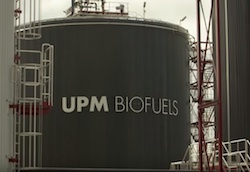The 11th annual Environment, Health and Safety Summit is coming to Kearney, Nebraska Tuesday, October 11, 2015. The daylong summit, for safety professionals, includes speakers from agencies including the Nebraska Department of Environmental Quality, Pinnacle Engineering, Fletcher Safety and Southeast Community College. The event is hosted by the Nebraska Ethanol Board (NEB).
 “This is a great opportunity to network and learn about the latest government regulations and compliance changes,” said Todd Sneller, NEB administrator who was recently awarded the Merle Anderson Award during the annual ACE Ethanol Conference. “We are proud that the summit has grown to include diverse companies beyond the ethanol industry during the past 11 years.”
“This is a great opportunity to network and learn about the latest government regulations and compliance changes,” said Todd Sneller, NEB administrator who was recently awarded the Merle Anderson Award during the annual ACE Ethanol Conference. “We are proud that the summit has grown to include diverse companies beyond the ethanol industry during the past 11 years.”
Sneller said that the event was originally established to provide compliance, safety, public health and emerging technology information for the rapidly developing ethanol industry, but today the Summit has attracted the attention of other professional sectors as government regulations continue to increase.
The NEB works with a variety of private partners and ethanol plant personnel, who focus on compliance, worker safety and public health issues, to put on the summit. College students also are invited to attend and may qualify for a scholarship to waive the registration fee.
The event is presented in cooperation with the Association of Nebraska Ethanol Producers (ANEEP) and open to professionals who work in environmental compliance, worker safety, and processing and manufacturing. For registration details, contact the NEB at 402-471-2941 or visit www.ethanol.nebraska.gov.









